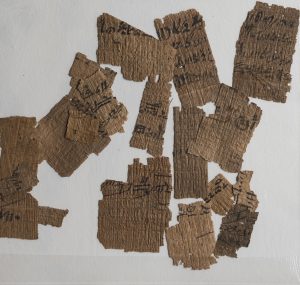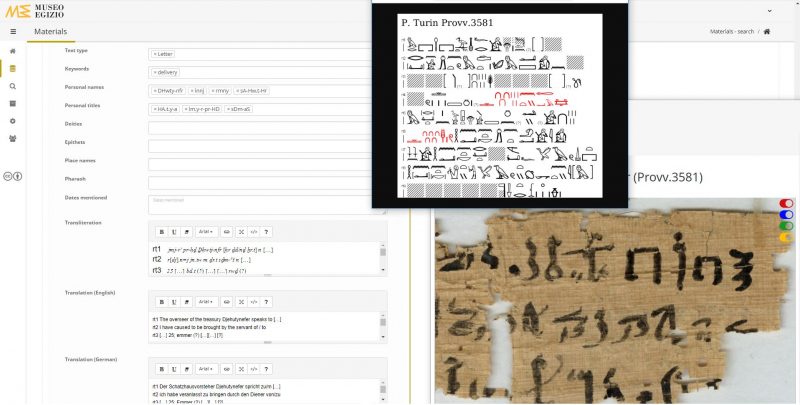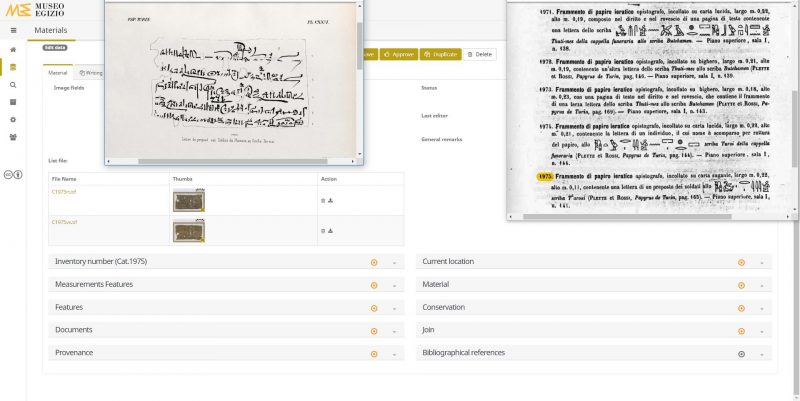Collection
The vast majority of the papyrus manuscripts in the Museo Egizio in Turin are unpublished and unknown to a wider audience. Most date from the Ramesside period and are highly likely to originate from the village of Deir el-Medina. The contents of the hieratic Ramesside manuscripts range from literary, ritual, magical, and religious materials to texts of a documentary nature, such as juridical documents and materials from the necropolis and temple administrations. The archive comprises several thousand papyrus fragments. Some 300 of these have been reassembled into larger manuscripts. Some of the assembled documents are more or less complete manuscripts, though some of their texts are partly unidentified. In addition to these, the museum holds thousands of tiny undocumented fragments, which may belong either to these ensembles or to other, as yet unidentified texts.

Restoration
The more than 10,000 papyrus fragments in the museum are not documented in the existing museum database. Neither are they stored according to state-of-the-art guidelines for the conservation of papyri. They need first to be carefully consolidated and subsequently digitised in order to provide the basis for further research. The papyrus restorer will handle the conservation and consolidation of these numerous fragments, many of which need to be cleaned, unfolded, straightened, and anchored with correctly aligned fibres in order to improve (or simply allow) legibility, as well as permit them to be reproduced photographically so that they can be worked on remotely.
Database
The Museo Egizio began developing the ‘Turin Papyrus Online Platform’ in 2017. This allows for the upload of images of the papyri and for the inclusion of a wealth of information on each papyrus (fragment). Each object is documented with metadata, including its inventory number(s), current location, physical features (such as sheet joins and overlaps, measurements and material), information about the conservation/restoration process, as well as the features of the text witnesses it carries (state of preservation, writing, layout, scribal practice, mode of inscription, type of text, content, keywords, date, etc.), and information about any drawings (type, colour, grid, etc.). The results of the ‘Crossing Boundaries’ Project (information about the material aspects of the papyri, edition and reconstruction of texts, etc.) will be incorporated in TPOP. This project also envisages the integration of a digital light-table into TPOP that will allow papyrologists and Egyptologists to make virtual joins of papyrus fragments by manipulating their digital images. The online platform is fully accessible since September 2019 via a newly created website for registered users.



